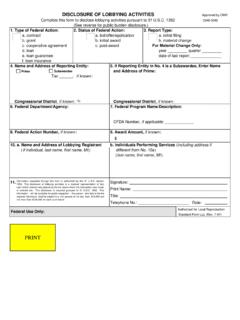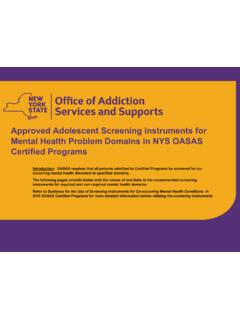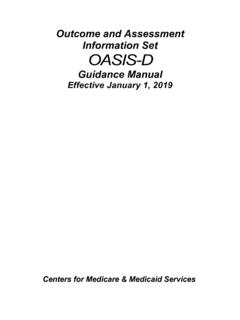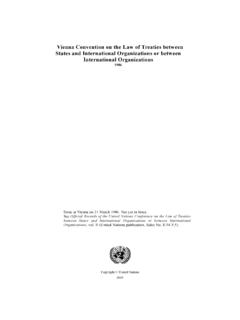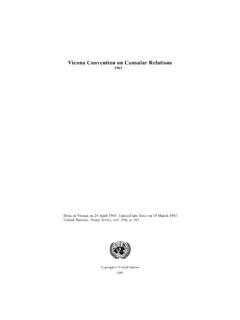Transcription of TIPS FOR DEVELOPING SURVEY …
1 TIPS FOR DEVELOPING SURVEY instruments /QUESTIONNAIRES 1 Table of Contents INTRODUCTION .. 2 IMPORTANT DEFINITIONS .. 2 DEVELOPING THE INSTRUMENT .. 5 PLAN YOUR SURVEY CAREFULLY .. 5 CREATE YOUR INSTRUMENT SPECIFIC TO THE RESPONDENT 6 WRITE CLEAR INSTRUCTIONS FOR YOUR SURVEY .. 6 CONSIDER THE LENGTH .. 6 DEVELOPING THE SURVEY QUESTIONS .. 7 GENERATE QUESTIONS BASED ON THE PURPOSE OF THE DATA .. 7 ASK THE MOST IMPORTANT QUESTIONS AT THE BEGINNING OF THE SURVEY .. 8 MAKE QUESTIONS SPECIFIC .. 8 ASK ONLY ONE QUESTION AT A TIME .. 8 USING SCALED QUESTIONS .. 8 RATING SCALES .. 9 LIKERT SCALES .. 10 MATCHING THE SCALE TO THE NATURE OF THE QUESTION .. 10 LEAVE OPEN-ENDED QUESTIONS FOR THE END .. 11 FINAL 12 CONSIDER THE TIMING .. 12 REVIEW .. 12 TEST YOUR INSTRUMENT .. 12 2 INTRODUCTION This manual was created to assist you, the grantee, to design surveys that help get the information needed from program participants and other stakeholders to improve programming and demonstrate results.
2 Surveys that are well-designed lead to data that are valid and reliable which helps you to highlight successes, and determine if and where changes are needed for improvements. We designed this manual to help you to think about the programs being designed, what outcomes are expected, and whether expected changes occur as a result of the activities implemented. This manual provides some definitions related to surveys and research methods, as well as tips to develop strong surveys and easy-to-understand SURVEY questions. However, it is not possible to provide examples that cover the breadth of programs or activities, nor is it exhaustive of the types of surveys and analysis available. Thus we encourage you to reach out to your Bureau of Educational and Cultural Affairs point of contact if you need further assistance.
3 IMPORTANT DEFINITIONS Instrument Types & Uses A Pre-Test/Post-Test is used when you would like to observe whether a desired change occurred as a result of your efforts. In a pre-test/post-test, the same instrument is administered both prior to an activity and after. Answers are compared to identify and report any changes. A pre-test/post-test can also help to identify the level of change that occurred. If the desired level of change did not occur, then perhaps the activity can be strengthened. Or rather, if the pre-test determines that a high level of knowledge already exists, then program managers can change activities to accommodate a higher level of proficiency. The pre-test/post-test is perhaps the most reliable method to determine whether a change occurred as a result of your efforts. Focus Groups are small, deliberately chosen groups of people that are interviewed together to observe reactions to the topics you propose.
4 During a focus group, it is important to observe the responses of all participants as there are usually members that are more outspoken than others. Focus groups are a great way to estimate how others, who have not or will not participate in your activities, will react to the topics proposed to the selected group. Of course, in addition to the observations, the information provided by the focus group participants will also be useful. Surveys are sets of standardized questions (questionnaire) that are administered to selected individuals or groups of individuals. Surveys can be administered on paper, as an interview, online, or via telephone. You will choose the most appropriate type of SURVEY depending on availability of respondents, security in the area, and/or time constraints. 3 Question Types [more information on these are provided throughout the document below] Closed-Ended Questions are those that list pre-set answers for respondents.
5 They include multiple-choice or yes/no answers. Closed-ended questions are easy to analyze but do not offer additional, anecdotal but important findings. Closed-ended questions include all relevant and possible answers and must be mutually exclusive (there cannot be more than one choice that answers the question). Open-Ended Questions are those that do not have a pre-defined set of answer options. Open-ended questions are used when you want respondents opinions, additional perspective, or information not captured in other question types. Responses to open-ended questions may inform answer choices for closed-ended questions in future surveys. Examples of open-ended questions include: Please list any additional activities that you think should be included in future training sessions, or what was one topic discussed during the training that had the most meaning for you and why?
6 Scales are a social science research technique used to measure the qualitative aspects of the group of people you need information from. They associate qualitative attributes to quantitative metrics. Likert Scales are a type of scale that asks respondents to indicate the level that they agree or disagree (generally, from strongly agree to strongly disagree ) about a statement. Likert scales generally include five-point, seven-point, or nine-point responses. Notice that they always have an odd number of answer options, which is to make sure the respondent is provided with a neutral response. Measurement Concepts Validity refers to whether or not your SURVEY (or other form of measure) is actually measuring what it is supposed to. Reliability is when your SURVEY (or SURVEY question) produces consistent results when used to measure the same thing over and over.
7 These are depicted graphically below. The goal is for your surveys (and all forms of measure) to have both validity AND reliability. 4 Bias is an unfair preferences or dislike of something. Different aspects of the respondents experiences or the way a SURVEY is administered could skew the results of a SURVEY . You will generally find bias in a SURVEY in the way a question is worded we have provided examples of bias (and how to avoid it) below. Careful SURVEY design and planning can help to avoid bias. Miscellaneous Data or Information Source Data are information that will help you make decisions about programming and will demonstrate success toward indicators. Respondents are the individuals taking the SURVEY ; the members of the group of people you would like information from, usually the beneficiaries of a program.
8 Questionnaires are research instruments (surveys) consisting of a series of questions for the purpose of collecting information about a particular subject. 5 DEVELOPING THE INSTRUMENT PLAN YOUR SURVEY CAREFULLY Before you begin to write your SURVEY , you should make a plan for who you need to SURVEY , the questions you want to ask, who will use the information from your SURVEY , how you plan to distribute your SURVEY , and when you need the results by. While not required, a SURVEY design matrix can be helpful in planning the creation of a SURVEY . Once completed, a design matrix summarizes virtually all of the SURVEY design decisions in an easy format. A SURVEY design matrix is below (each section is described in italics along with an example in the third row). Any program stakeholder can utilize this matrix to help them make decisions about what questions are the most appropriate to ask given their program activities.
9 Indicator data/question to be answered Information Source Sampling Data Collection (Mode) Data Collection (When) SURVEY Questions SURVEY Testing Description This will most likely come from the indicator you are reporting against or perhaps a question your team or the client wants to know. Who can answer the question? Will we be able to ask everyone to answer the question? If not, how will we choose? Face-to-face? Through email? The internet? Phone? After the exchange ends? After a workshop session is completed? What question(s) will your SURVEY ask to answer the question? What information did pre-testing the SURVEY reveal? Do we need to clarify wording? Were any questions not answerable? Example What percentage of participants improved their perception of Americans during their exchange? Exchange program participants We should be able to locate all program participants through email addresses Will implement through email SURVEY will be conducted immediately after the exchange ends 1.
10 How did your perception of Americans change during the exchange: improve? Stay the same? Diminsh? Conducted a pre-test with 5 of 100 participants and they suggested we make a specific change to the language to make the SURVEY more clear 6 CREATE YOUR INSTRUMENT SPECIFIC TO THE RESPONDENT GROUP When DEVELOPING your SURVEY , tailor it to the target group who will be completing it. If you are surveying multiple groups ( , American or foreign participants; youth or adults; academic or professional exchange participants), be sure to develop SURVEY instruments for each, as respondents from each group might not be able to answer questions written for other groups. For example, youth participants will be able to answer questions based on their knowledge gained and experiences from their exchange experiences; however, they will not be able to answer questions that are related to specific activities from a professionally-focused exchange program.








